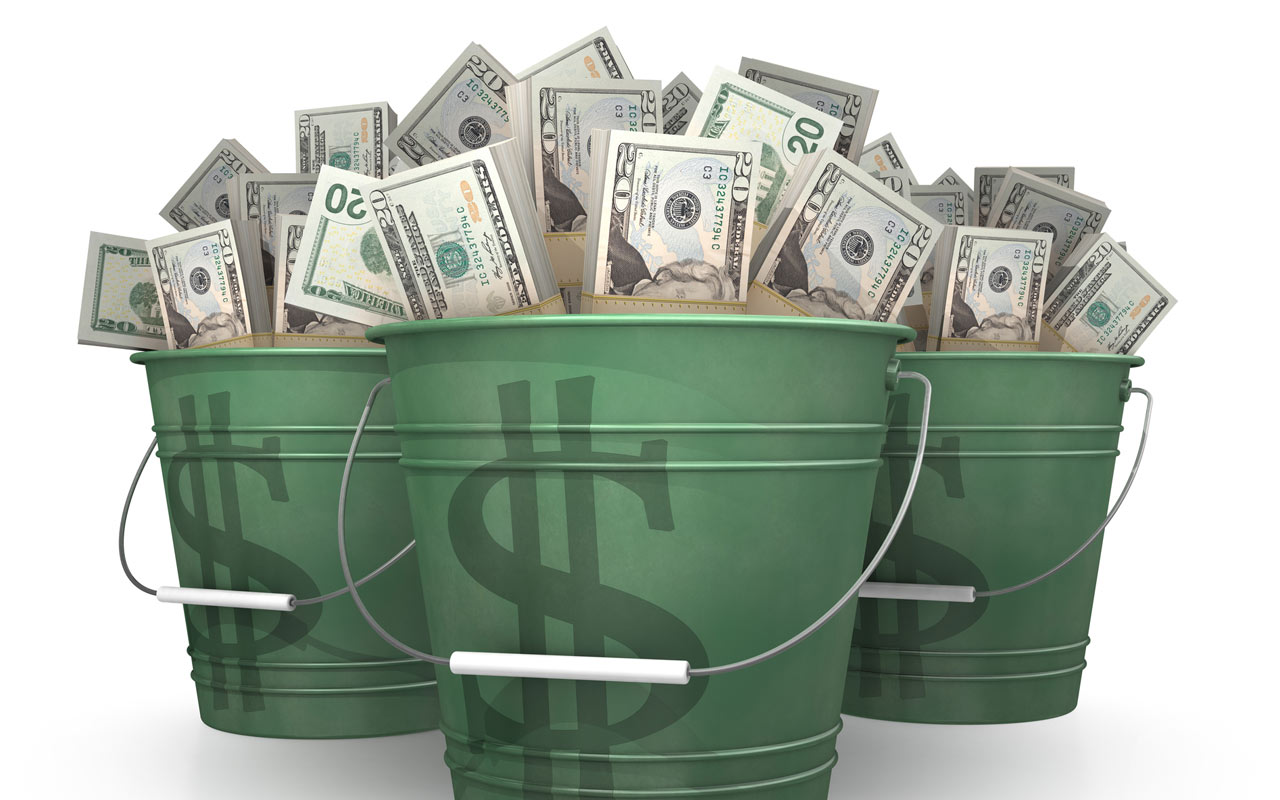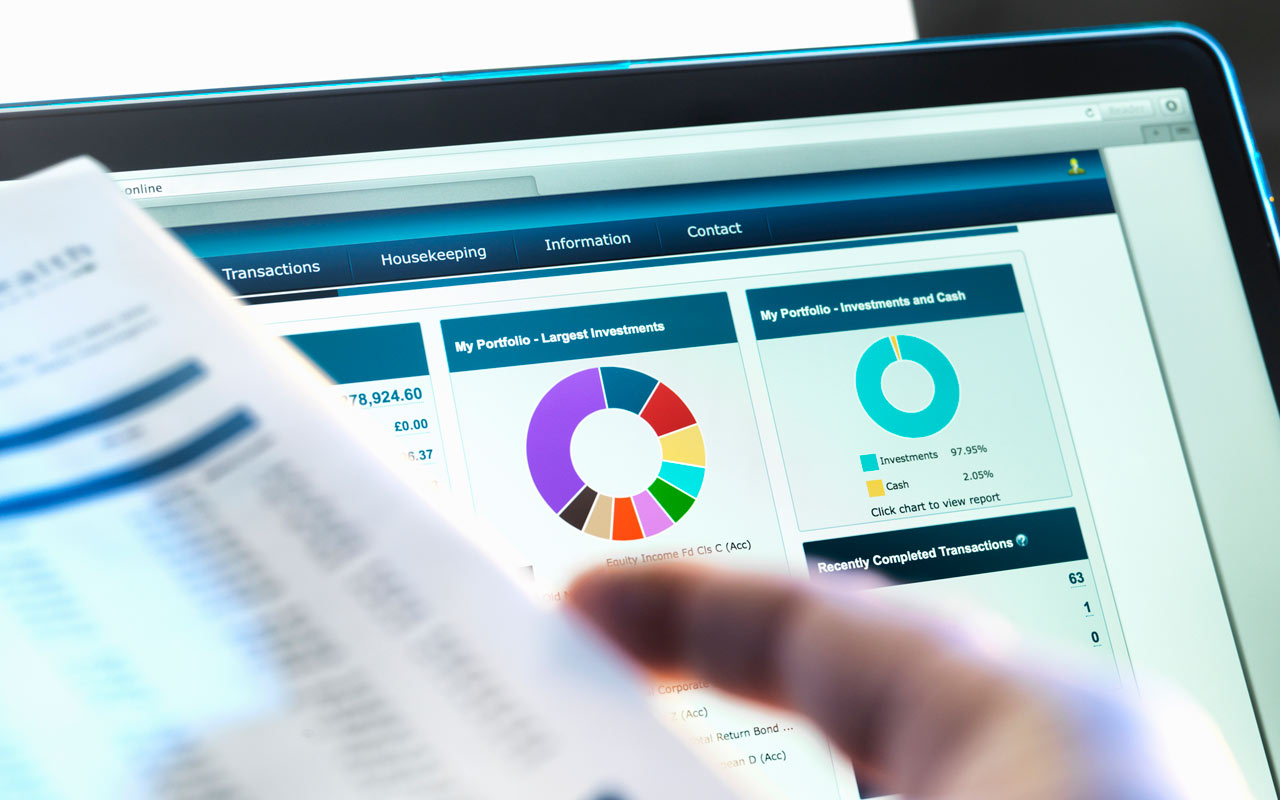12 Strategies to Generate Income in Retirement
When it comes to saving for retirement, maybe you've done everything right.

When it comes to saving for retirement, maybe you've done everything right. You started early, maxed out your 401(k) plan, invested in a diversified portfolio and avoided costly mistakes, such as cashing out your retirement plan. Fantastic. But now comes the hard part: making sure you don't outlive your money.
That's a tall order for today's retirees. Taxes, unpredictable investment returns, rising health care costs and inflation down the road can significantly erode the value of your nest egg. And perhaps the biggest challenge is that you'll probably need the money for a long time. A 65-year-old man has a life expectancy of 19.3 years; it's 21.6 years for a 65-year-old woman. If you're married, there's a 45% chance that one of you will live to age 90 and a nearly 20% chance that you or your spouse will live to 95.
Fortunately, there are steps you can take to generate extra income and extend the life of your portfolio. Let's take a look.

1. Put Your Money in Buckets
A bear market just as you enter retirement couldn't come at a worse time if you're forced to sell securities after prices have plunged. That's where the "bucket system" can help. Jason L. Smith, a financial adviser in West Lake, Ohio, and author of The Bucket Plan, uses the system with clients, splitting their assets among three buckets: "Now," "Soon" and "Later."
- The Now bucket holds what you'll need in the short term and should be parked in a savings account. Smith recommends setting aside enough so that, when added to Social Security or a pension, it will cover your basic expenses for up to a year. It should also have enough for major expenses that are likely to crop up over the next couple of years, such as paying for a new roof, plus cash for unexpected emergencies.
Money in the Soon bucket will be your source of income for the next 10 years. Smith recommends investing in a fixed annuity or high-quality short-term bonds or bond funds. As the Now bucket is depleted, you withdraw money from the annuity or sell some of the fixed-income investments in the Soon bucket to replenish it.
The assets in the Later bucket aren't meant to be tapped for more than a decade into your retirement, so they may be invested more aggressively in stock funds and alternative investments such as REITs. This bucket can also include life insurance or a deferred-income annuity, which pays income later in life.

2. Manage Your Spending
To avoid running out of money during retirement, the standard rule has been to withdraw 4% from your nest egg in the first year of retirement and use the inflation rate as a guide to adjust withdrawals in subsequent years. For example, if you have $1 million, you can withdraw $40,000 in year one. If the inflation rate clocks in at 2% in year two, your withdrawal grows by 2%, to $40,800.
The 4% rule is based on historical market returns for a portfolio evenly split between stocks and bonds. But as the saying goes, past performance is no guarantee of future returns. Plus, the rule assumes you will live 30 years in retirement, so you might want to adjust the withdrawal rate up or down based on your life expectancy, says Judith Ward, a senior financial planner at T. Rowe Price.
Like any rule of thumb, the 4% rule won't work for everyone or in every situation. You might need to reduce the withdrawal rate if you retire early or have a major expense, or if a market downdraft wipes out a chunk of your nest egg. Or you might increase it if your investments have appreciated more than expected, or you've spent less than you anticipated and have built up a sizable balance.

3. Protect Against Inflation
The inflation rate has averaged 2.2% since 2000, and the Kiplinger forecast is for 1.3% inflation for 2017 and 1.9% for 2018. That seems tame, but don’t underestimate the power of even modest inflation, which can significantly erode purchasing power over time.
- One way to make sure your nest egg keeps up with the cost of living is to remain invested in stocks. That can make for a bumpy ride over the short term, but over the long haul stocks' steady upward trend makes them a go-to hedge against inflation. As measured by the S&P 500, stocks have returned an average annual rate of 10% for nine decades. Over the next decade, investors are more likely to see an average annual rate of 8% or even less—but even if inflation reverts to its long-term historical norm of a little over 3%, that return still provides a healthy cushion.
- Treasury inflation-protected securities (TIPS) are another hedge against rising consumer prices. With these bonds, issued by Uncle Sam, your principal will be adjusted for inflation. In addition, you're guaranteed a fixed rate of interest every six months, so as the principal rises, so does the amount of interest you'll earn.
If you are near or just beginning retirement, advisers generally recommend a portfolio of up to 60% in stocks. But Michael Kitces, director of wealth management for Pinnacle Advisory Group in Columbia, Md., suggests that when stocks are highly valued (as they are now), investors should reduce their stock allocation to 30% at retirement. (If you're using the bucket system, your 30% allocation to stocks goes in the Later bucket.) You can gradually increase your portfolio's stock holdings to 60% or whatever amount meets your comfort level, he says.

4. Get Income From Your Investments
If you need to boost your retirement paycheck to supplement Social Security and other sources of guaranteed income—or to generate cash while you wait for delayed benefits to supercharge your Social Security—dividend-paying stocks in a taxable portfolio should be high on your list. They can make up one-fourth to nearly one-half of your stock portfolio.
A number of blue-chip stocks have yields of 2.5% to 4%, including such stalwarts as Boeing (symbol BA), Caterpillar (CAT) and 3M (MMM). Look for companies with a record of regularly increasing dividends over time, which can serve as a hedge against inflation. But beware of chasing the highest yields. Outliers that boast yields of 7% or 8% may not generate enough profits to sustain those dividends.
As alternatives to individual stocks, consider exchange-traded funds and mutual funds that focus on investing in companies that pay dividends. T. Rowe Price Dividend Growth (PRDGX) and Vanguard Equity Income (VEIPX) are members of the Kiplinger 25, the list of our favorite mutual funds; Kiplinger's 20 favorite ETFs include Schwab U.S. Dividend Equity (SCHD) and Vanguard High Dividend Yield (VYM).
- Bonds are another key source of income. "You can make a huge difference in your income and your total return by properly managing the bond portion of your portfolio," says Mari Adam, a certified financial planner with Adam Financial Associates, in Boca Raton, Fla.
THE KIPLINGER 25: Our 25 Favorite Mutual Funds for Low Fees

5. Delay Social Security Benefits
You might not think of Social Security as an inflation fighter, but for many people it will be their only stream of income with an automatic cost-of-living adjustment. The COLA was only 0.3% for 2017, but it's projected to be 2.2% in 2018. (When inflation was soaring in 1981, the COLA hit a record high of 14.3%.)
More than 45% of people take Social Security retirement benefits as early as they can, at age 62. For those who have taken early retirement, perhaps because of poor health, this often makes sense. But grabbing benefits early comes at a steep cost. If you claim Social Security at 62, your benefit will be reduced by as much as 30% compared with delaying until full retirement age (currently 66 but gradually rising to age 67). And if you're patient and have other sources of income, you get a generous bonus for waiting until age 70 to claim benefits: For every year you wait to take Social Security beyond full retirement age until age 70, your benefit increases by 8%. Even better, future COLAs will be based on that bigger benefit.
- Spouses should coordinate their claiming strategies to maximize the survivor benefit. A married couple is likely to maximize lifetime income from Social Security if the higher earner delays taking Social Security until age 70, so no matter who dies first, the survivor gets the largest possible benefit.

6. Earn Extra Income
In addition to allowing you to delay taking Social Security, income from a part-time job can help cover your expenses during a market downturn, which means you won't have to sell investments at a loss to pay the bills. Part-time and seasonal job opportunities run the gamut, from working as a park ranger to teaching English as a foreign language in another country. Freelancing is another way to earn extra cash (see www.freelancersunion.org for advice on everything from contracts to taxes). Freelance gigs range from online tutoring to consulting in your former profession. If you have a garage apartment or second home, you can earn income through home-sharing services, such as Airbnb.
- Note: If you're receiving Social Security benefits and haven't reached full retirement age—66 for most retirees—be mindful of the Social Security earnings test. In 2017, if you make more than $16,920, you'll lose $1 in benefits for every $2 you earn over that amount. In the year you reach full retirement age, you'll give up $1 for every $3 you earn over $44,880 before your birthday. Starting in the month you reach full retirement age, you can earn as much as you want without worrying about the earnings test. But the benefits aren't lost forever. Once you reach full retirement age, your benefits will be adjusted to recover what was withheld. Still, if you're planning on working after you retire, it makes sense either to keep your earnings below the limit or delay claiming benefits until you reach full retirement age.

7. Buy an Annuity
When you buy an immediate annuity, you give an insurance company a lump sum in exchange for a monthly check, usually for life. You can buy an annuity that has survivor benefits so that it will continue to pay your spouse after you die. But you pay for that protection by accepting smaller monthly payouts. Another option is a deferred-income annuity; you purchase the annuity when you’re in your fifties or sixties, but the payments don't start for at least 10 years. The longer you wait, the bigger the payouts. Of course, if you die before payments start, you get nothing—unless you opt for return of premium or survivor benefits. (These products are often referred to as longevity insurance, because they protect you from the risk of outliving your savings.)
A relatively new type of deferred-income annuity, a qualified longevity annuity contract (QLAC), offers a tax benefit for retirees who have a lot of money in tax-deferred retirement accounts. You can invest up to 25% of your traditional IRA or 401(k) plan (or $125,000, whichever is less) in a QLAC without taking required minimum distributions on that money when you turn 70½. To qualify for this special tax treatment, your payments must begin no later than age 85. You can shop for QLACs at www.go2income.com.
But don't stash all of your nest egg in an annuity. Most experts recommend investing no more than 25% to 40% of your savings in an annuity. Alternatively, calculate your basic expenses, such as your mortgage, property taxes and utilities, and buy an annuity that, when added to Social Security benefits, will cover those costs.
QUIZ: Are Annuities Right for You?

8. Minimize Taxes
To get the most out of your retirement savings, you need to shield as much as possible from Uncle Sam. Fortunately, there are plenty of legal ways to lower your tax bill, but they require careful planning and a thorough understanding of how your different retirement accounts are taxed.
Conventional wisdom holds that you should tap your taxable brokerage accounts—money you haven't invested in an IRA or other tax-deferred account—first, particularly if your income is low enough to qualify for tax-free capital gains.
Next, take withdrawals from your tax-deferred accounts, such as your IRAs and 401(k) plans. Once you turn 70½, you'll have to take required minimum distributions (RMDs) every year, based on the year-end balance of all of your tax-deferred accounts, divided by a life-expectancy factor provided by the IRS that's based on your age. The only exception to this rule applies if you are still working at 70½ and have a 401(k) plan with your current employer; in that case, you don't have to take RMDs from that account. You'll still have to take withdrawals from your other 401(k) plans and traditional IRAs, unless your employer allows you to roll them into your 401(k).
- Save your tax-free Roth accounts for last so you can take advantage of tax-deferred and tax-free growth. There are no required distributions, so if you don't need the money, you can leave it in the account to grow for your heirs.
There are some exceptions to this hierarchy. If you have a large amount of money in traditional IRAs and 401(k) plans, your RMDs could push you into a higher tax bracket. To avoid that scenario, consider taking withdrawals from your tax-deferred accounts before you turn 70½. Work with a financial planner or tax professional to ensure that the amount you withdraw won't propel you into a higher tax bracket or trigger other taxes tied to your adjusted gross income, such as taxes on your Social Security benefits. The withdrawals will shrink the size of your tax-deferred accounts, thus reducing the amount you'll be required to take out when you turn 70½.
QUIZ: Are You Prepared to Pay Taxes in Retirement?

9. Manage Your Pension
At a time when defined-benefit plans are becoming as rare as typewriters, consider yourself fortunate if you have a traditional pension to manage.
One of the first decisions you'll probably have to make is whether to take your pension as a lump sum or as a lifetime payout. A lump sum could make sense if you have other assets, such as life insurance or a sizable investment portfolio, and if you're comfortable managing your money (or paying someone else to do it for you). You'll also have more flexibility to take withdrawals, and your investments could grow faster than the rate of inflation. What you don't spend will go to your heirs.
A lifetime payout, however, offers protection against market downturns, and you won't have to worry about outliving your money. You'll probably also get a higher payout from your former employer than you could get by taking a lump sum and buying an annuity from an insurer. Consider longevity when deciding how to structure your lifetime payout. Married couples have a couple of basic options for their payments: single life or joint and survivor. Taking the single-life payment will deliver bigger monthly payments, but your pension will end when you die. By law, if you're married, you must obtain your spouse's consent before taking this option. With the joint-and-survivor alternative, payments will be smaller, but they'll continue as long as you or your spouse is alive.

10. Tap Permanent Life Insurance
Most of us buy life insurance to provide financial security for our loved ones after we're gone, but a permanent life insurance policy could provide a valuable source of income while you're still around to enjoy it.
A permanent life insurance policy has two components: the death benefit, which is the amount that will be paid to your beneficiaries when you die, and the cash value, a tax-advantaged savings account that's funded by a portion of your premiums.
- You can withdraw your basis—the amount in the cash-value account you've paid in premiums—tax-free. That could provide a cash cushion in case, say, the stock market takes a 2008-style downturn and you want to give your portfolio a chance to recover. (Withdrawals that exceed what's in the cash-value account will be taxed in your top tax bracket.) The death benefit will be reduced by the total amount you withdraw. You can also borrow against your policy. Interest rates range from 5% to 8%, depending on market rates and whether the loan is fixed or variable. If you don't repay the loan, or pay back only part of it, the balance will be deducted from your death benefit when you die.
And if you need a regular source of income, you can convert your life insurance into an income annuity through what's known as a 1035 exchange. The downside to this strategy is that you'll give up the death benefit, but you'll lock in income for the rest of your life, or for a specific number of years. The conversion is tax-free, but you'll pay taxes on a portion of each payout, based on the proportion of your basis to your gains. Your insurance company may offer an income annuity, but you should look at payouts offered by other providers, too. Go to www.immediateannuities.com to comparison shop.
If your insurance policy pays dividends, you can generate income without giving up the death benefit. Instead of reinvesting the dividends in the policy, which will increase its death benefit and cash value, you can take the dividends in cash. Dividends typically range from 5% to 6.7%, and any dividends you receive up to the policy's cost basis are tax-free. Dividends that exceed that amount are taxable.

11. Plan for Health Care Costs
Fidelity Investments estimates that the average 65-year-old couple retiring now will need about $260,000 to pay out-of-pocket health care costs, including deductibles and Medicare premiums, over the rest of their lives. That doesn’t include long-term care, which can be a major budget buster.
There are a variety of options to help pay these future medical bills. One tax-friendly way is a health savings account. As long as you have an eligible high-deductible health insurance policy, you can contribute to an HSA either through your employer or on your own (but you can no longer contribute after you’ve signed up for Medicare).
An HSA offers a triple tax advantage. You contribute money on a pretax basis to the account. Money in the account grows tax-deferred. And withdrawals are tax-free if used to pay medical expenses, either today or when you're retired. (You'll owe income taxes and a 20% penalty on withdrawals used for other purposes, although the penalty disappears once you turn 65.)
- To make the most of the HSA, contribute as much as you can to the account and pay current medical bills out of pocket. That way, the money in the account has time to grow. Years from now, you can use HSA funds to reimburse yourself for medical bills you're paying today.
The maximum contribution for 2017 is $3,400 for single coverage and $6,750 for families, plus an extra $1,000 if you're 55 or older. Your health insurance policy must have a deductible of at least $1,300 for singles and $2,600 for families.

12. Move to a Cheaper Locale
Downsizing to a smaller place, particularly after the kids are launched, is a common way to lower housing costs and stay close to family. If you live in a highly appreciated home, selling can free up large sums that can be used to wipe out debt, add to a nest egg or pay future long-term-care costs. (Married couples can protect up to $500,000 in profit from the sale of a house from capital gains tax; singles can shelter half that amount.)
But for a move to become a financial game changer and significantly lower living costs, consider putting down roots in a state where housing and living expenses are cheaper.
"This can take a retirement situation that is nearly hopeless and turn it into one that is comfortable," says Tim Maurer, director of personal finance for BAMAlliance in Charleston, S.C. For example, housing costs in San Diego are 173% higher than in Galveston, Texas, according to Bestplaces.net. Galveston made Kiplinger's most recent list of great places to retire. Kiplinger also compiles a list of the most tax-friendly states for retirees. Moving to a state that gives retirees a big tax break can free up money for a higher standard of living in retirement. (If you want to stay in your home and tap the equity for income, see Use Your Home to Get More Income.)
RETIREE TAX MAP: State-by-State Guide to Taxes on Retirees
Get Kiplinger Today newsletter — free
Profit and prosper with the best of Kiplinger's advice on investing, taxes, retirement, personal finance and much more. Delivered daily. Enter your email in the box and click Sign Me Up.

-
 5 Easy Weatherproofing Projects That Help Prevent Damage and Save on Insurance
5 Easy Weatherproofing Projects That Help Prevent Damage and Save on InsuranceProtect your home from storms and water damage with these simple weatherproofing upgrades — some may help reduce your home insurance premium.
By Paige Cerulli
-
 If Trump Fires Jerome Powell, What Happens To Savings and Mortgage Rates?
If Trump Fires Jerome Powell, What Happens To Savings and Mortgage Rates?President Donald Trump expressed his desire to remove Fed Chair Jerome Powell. If the president is successful, how would it impact your savings accounts?
By Sean Jackson
-
 What to Do With Your Tax Refund: 6 Ways to Bring Growth
What to Do With Your Tax Refund: 6 Ways to Bring GrowthUse your 2024 tax refund to boost short-term or long-term financial goals by putting it in one of these six places.
By Rachael Green
-
 What Does Medicare Not Cover? Eight Things You Should Know
What Does Medicare Not Cover? Eight Things You Should KnowHealthy Living on a Budget Medicare Part A and Part B leave gaps in your healthcare coverage. But Medicare Advantage has problems, too.
By Donna LeValley
-
 12 Great Places to Retire in the Midwest
12 Great Places to Retire in the MidwestPlaces to live Here are our retirement picks in the 12 midwestern states.
By Stacy Rapacon
-
 10 Cheapest Small Towns to Live In
10 Cheapest Small Towns to Live InThe cheapest small towns might not be for everyone, but their charms can make them the best places to live for plenty of folks.
By Dan Burrows
-
 15 Reasons You'll Regret an RV in Retirement
15 Reasons You'll Regret an RV in RetirementMaking Your Money Last Here's why you might regret an RV in retirement. RV-savvy retirees talk about the downsides of spending retirement in a motorhome, travel trailer, fifth wheel or other recreational vehicle.
By Bob Niedt
-
 The Cheapest Places To Retire in the US
The Cheapest Places To Retire in the USWhen you're trying to balance a fixed income with an enjoyable retirement, cost of living is a crucial factor to consider.
By Stacy Rapacon
-
 The Six Best Places to Retire in New England
The Six Best Places to Retire in New Englandplaces to live Thinking about a move to New England for retirement? Here are the best places to land for quality of life, affordability and other criteria.
By Stacy Rapacon
-
 13 Smart Estate Planning Moves
13 Smart Estate Planning Movesretirement Follow this estate planning checklist for you (and your heirs) to hold on to more of your hard-earned money.
By Janet Kidd Stewart

